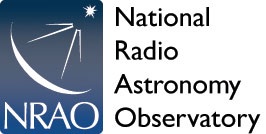
From The ESO/NRAO/NAOJ ALMA Observatory (CL)
6.11.24
Contacts
Corrina Jaramillo Feldman
Public Information Officer – New Mexico
VLA, VLBA, ngVLA
Phone: +1 505 366 7267
Email: cfeldman@nrao.edu
Jill Malusky
Public Information Officer
NRAO
Phone: +1 304-456-2236
Email: jmalusky@nrao.edu
Nicolás Lira
Education and Public Outreach Coordinator
Joint ALMA Observatory, Santiago – Chile
Phone: +56 2 2467 6519
Cel: +56 9 9445 7726
Email: nicolas.lira@alma.cl
Bárbara Ferreira
ESO Media Manager
Garching bei München, Germany
Phone: +49 89 3200 6670
Email: press@eso.org
Yuichi Matsuda
ALMA EA-ARC Staff Member
NAOJ
Email: yuichi.matsuda@nao.ac.jp

Artist impressions of binary systems DF Tau and FO Tau. Credit: S. Dagnello, NSF/AUI/NRAO
At the 244th American Astronomical Society (AAS) meeting, researchers unveiled groundbreaking findings from a pioneering high-angular resolution program that sheds new light on planet formation in circumstellar disks around young stars in binary systems. Leveraging the unparalleled capabilities of the Atacama Large Millimeter/submillimeter Array (ALMA) in Chile and the Keck II 10-meter telescope at Maunakea in Hawai’i, the study offers a transformative understanding of the conditions that nurture or inhibit planet formation.

Primordial disks of gas and dust around young stars are known to be the birthplaces of planets. However, the factors that ensure these disks last long enough for planet formation and what causes their early dissipation remain unclear. Circumstellar disks in pre-main sequence binary systems offer an ideal setting to investigate these questions. By examining disk properties, such as size, substructure, and inclination, in relation to stellar features like rotation speed and magnetic field strength, researchers are starting to unravel the complex interactions that shape these environments. Since binary and multiple-star systems are ubiquitous, studying them is particularly important.
This innovative research combines millimeter imaging of circumstellar disks with ALMA and high-resolution spectroscopy of young stars using Keck with the NIRSPEC spectrometer.

By focusing on binaries with relatively well-determined orbits, the team can control for orbital parameters and highlight critical relationships between the properties of circumstellar disks and their host stars.
The study’s detailed examination of the D.F. Tau binary, quasi-twin stars with an average separation of 14 astronomical units (where 1 au equals the Earth-Sun distance) in an elongated orbit, reveals cool dust in two circumstellar disks detected by ALMA. One disk is magnetically locked to its central star and actively accreting material onto it. In contrast, the inner region of the other disk appears to have eroded and decoupled from its rapidly rotating central star, suggesting a potential link between stellar rotation, magnetic disk locking, and early disk dissipation. Misalignments between D.F. Tau’s orbit, circumstellar disks, and stellar inclinations may impact the disk evolution.
In contrast, another young star twin, F.O. Tau, a 22 au binary in a more circular orbit, displays ALMA-detected disks well-aligned with the binary orbit. Both components exhibit modest rotation speeds and appear magnetically locked to their disks. These observations reveal similar behavior in disks and stars, providing fresh insights into disk longevity and dissipation dynamics.
High-angular resolution observations from ALMA have shown intricate disk sub-structures, including spiral patterns, gaps, and ring formations around single stars and wide binary companions. Although disk substructures are unresolved in D.F. Tau and F.O. Tau, determining bulk disk properties in close binary systems significantly advances our understanding of planet formation environments.
See the full article here .
Comments are invited and will be appreciated, especially if the reader finds any errors which I can correct. Use “Reply”.
five-ways-keep-your-child-safe-school-shootings
Please help promote STEM in your local schools.
The Atacama Large Millimeter/submillimeter Array (ALMA) (CL) , an international astronomy facility, is a partnership of Europe, North America and East Asia in cooperation with the Republic of Chile. ALMA is funded in Europe by the European Organization for Astronomical Research in the Southern Hemisphere (ESO), in North America by the U.S. National Science Foundation (NSF) in cooperation with the National Research Council of Canada (NRC) and the National Science Council of Taiwan (NSC) and in East Asia by the National Institutes of Natural Sciences (NINS) of Japan in cooperation with the Academia Sinica (AS) in Taiwan.
ALMA construction and operations are led on behalf of Europe by ESO, on behalf of North America by the National Radio Astronomy Observatory (NRAO), which is managed by Associated Universities, Inc. (AUI) and on behalf of East Asia by the National Astronomical Observatory of Japan (NAOJ). The Joint ALMA Observatory (JAO) provides the unified leadership and management of the construction, commissioning and operation of ALMA.

ALMA is a time machine!
ALMA-In Search of our Cosmic Origins
ALMA – The Rebirth of a Giant
ALMA and its Partners Celebrate 10 Years of Groundbreaking Science


